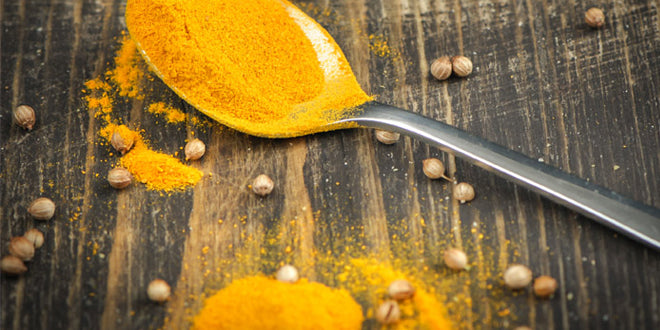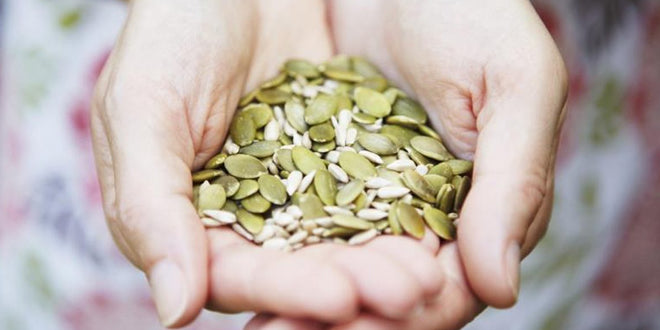Have you ever referred to inflammation as "the silent killer?" If you're unaware, it has coined such a negative title due to the numerous health issues, complications and illnesses it's linked to, such as heart failure, clinical depression and Alzheimer's disease. Last week, we welcomed Dr. Shavon Jackson-Michel, a naturopathic physician, to lead our August webinar about the impact of chronic inflammation and how the spice of the century can provide natural relief. But before we recognize the health benefits of this Indian seasoning, it's important to understand the difference between classic and chronic inflammation.
What's the Difference?
The first thing that comes to mind when you think of inflammation is the result of a twisted ankle, or maybe even the swelling that develops from a bug bite, according to Dr. Jackson-Michel. This is acute inflammation, also known as "classic" or "hot inflammation." It's the body's response to tissue injury or infection that results in swelling, redness, heat and pain. Fortunately, classic inflammation is self-limiting, which means it can resolve itself without treatment.
"Obesity is one of the most telling factors of chronic inflammation."
The chronic form is also known as "cold" or "silent inflammation" because you don't even know it's happening. Those common symptoms of classic inflammation do not arise with chronic. The cause is usually an untreated infection, or a viral infection the body can't identify. Diet, stress and aging are among the other factors. But obesity is one of the most telling factors, as the production of fat cells also leads to what Dr. Jackson-Michel explained as one of the main creators of those stimulating pathways that lead to chronic inflammation.
"It has a lot to do with the white blood cells that are associated with fat cells," she said. "As the fat cells accumulate more and more fat, they also accumulate more and more white blood cells. It's these white blood cells that have the ability to produce a variety of chemical mediators or stimulating pathways that will actually lead to inflammation chemicals percolating around in the body."
The pathways that lead to chronic inflammation need to be controlled. But is there a way?
Can Chronic Inflammation Fix Itself?
In the presentation, Dr. Jackson-Michel made a realistic comparison in chronic inflammation to an intense traffic jam. If you woke up, got in your car and left for work only to find that the main intersection was jam-packed in complete chaos with no order, would you want to continue the commute to your job? Would you decide to turn around and walk? Probably walk, because you know that it's not likely that this mess is going to clean itself up in time. It's going to take structure and guidance from police officers for people to get where they need to go.

Unfortunately, chronic inflammation isn't much far off from this scenario. Just like the various cars, trucks and buses coming from different streets and creating chaos in the middle of the intersection, there are numerous signaling pathways coming from different directions in the body that are all trying to get to the same place at the same time. Unfortunately, the result is chronic inflammation and it's a perpetual response that requires external control, much like the traffic cop. So how can we take charge, deal with this chaos and defeat the silent killer? The answer: the spice of the century.
A Natural Defense Against the Silent Killer
Turmeric, a staple dietary spice in Indian cuisine, does not only intensify flavors in dishes - it has been used for medicinal purposes for at least 2,500 years. Did you know that India has the lowest rates of chronic inflammatory disease in the world? This includes a variety of conditions, such as colon and prostate cancer and Alzheimer's. How can this be? We can partly thank the spice of the century for that.
There are over 230 active constituents in turmeric, making it a very diverse molecule. Those include curcuminoids and essential oils that make it a powerful antioxidant. The curcumin in turmeric is essentially the traffic officer regulating all of the pathways. It's the external controller that targets every signal from different angles, making it a true, natural anti-inflammatory.
That's why we've created New Generation Bio-Curcumin, the supplement that puts inflammation at rest. It's 86 percent curcuminoids and 7 to 9 percent turmeric essential oils. It's 100 percent turmeric derived, with no binders, fillers or bio-enhancers. As always, the Hallelujah Diet strives to provide only the most organic and effective supplements available, following God's guidance in a leading a natural, wholesome lifestyle.








